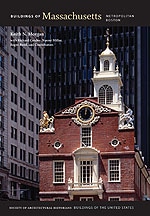
A model of participatory planning, one involving various professional organizations as well as diverse neighboring communities, this fifty-two-acre urban park was a decade in the making. Influenced by the ethos of the late 1960s, public protests defeated a highway project to be built over the deteriorating tracks of railroad lines. Analogies might be invoked, albeit on a different plane and scale, with Frederick Law Olmsted's Emerald Necklace, as this 4.7-mile tract forms a greenbelt joining separate districts. Amenities include access to the stations of the Orange Line, buried beneath the park. The winding pedestrian paths lead to provisions for play—cycling, tennis, basketball—and reveal a variety of plantings intelligently conceived with hardy species and flower beds interspersed with community vegetable gardens. Vistas are intriguing along the entire route, whether of the old South End brick streets or the gleaming skyscrapers of the Back Bay. The Southwest corridor appears to be a perfect antidote to both high-density development and urban parking wastelands.

